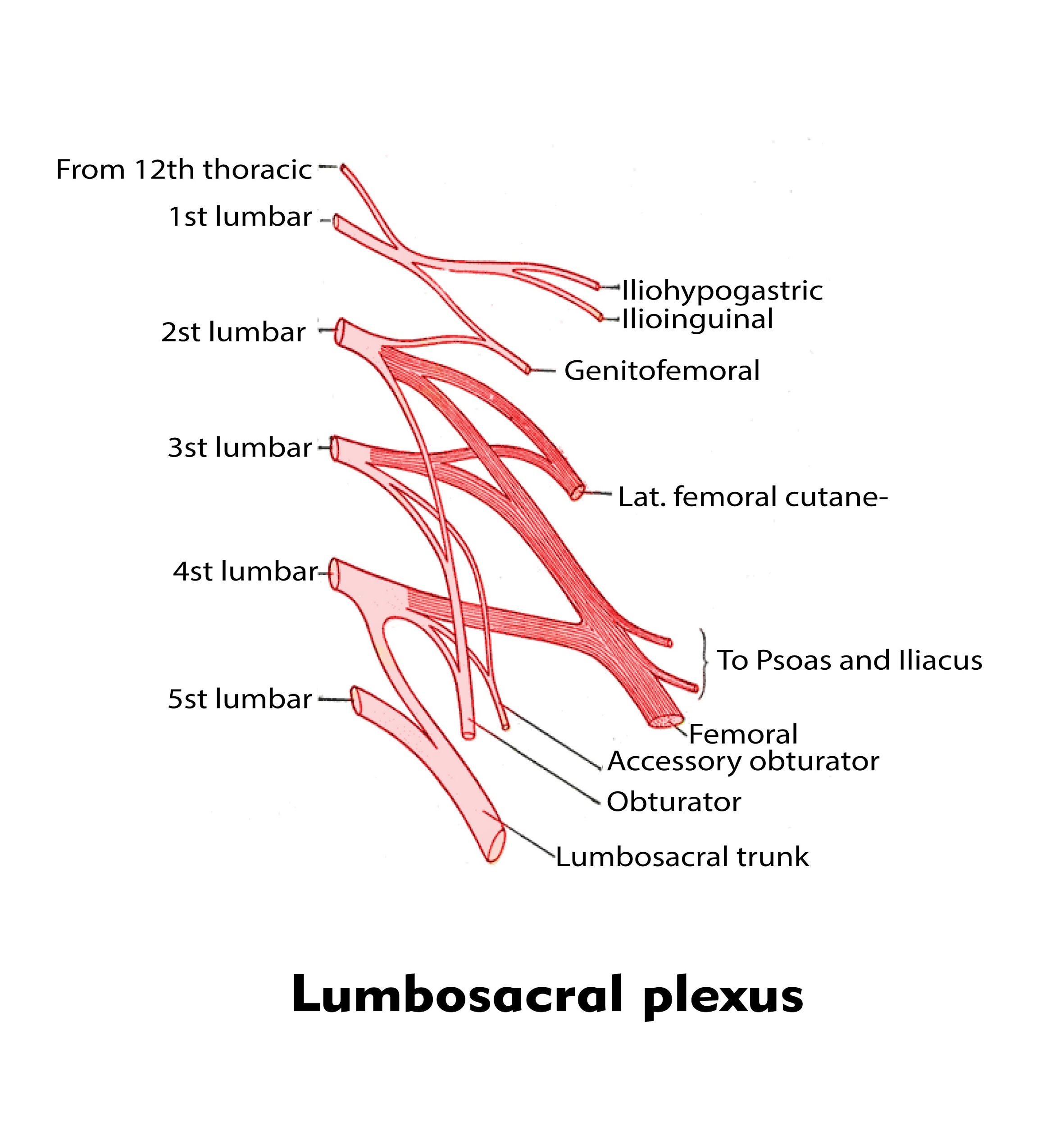Answer
399.3k+ views
Hint: They receive supplies from the lumbosacral plexus and are analogous to pelvic fins in fishes and also they are modified to form scaly claws in birds. They provide support to the animal’s body and allow them to move from one place to another.
Correct step by step answer:
Nerves from the lumbosacral plexus are supplied to the hindlimb. The nerve plexus refers to the network of the intersecting nerves that innervate the same part of the body. The lumbar plexus is formed by the ventral ramification of the C5- C8 and T1 spinal nerves. This plexus supplies skin and musculature of the hindlimbs or the lower limbs.
- The anterior divisions of the lumbar nerves, sacral nerves, and nervus coccygeus form the nerve plexus, the primary spinal nerve is usually joined by a branch from the twelfth thoracic. For description the lumbosacral plexus is split into three parts:
- Lumbar plexus: The lumbar plexus which forms a part of the larger nerve plexus may be a web of nerves within the lumbar region of the body. It is formed by the divisions of the primary four lumbar nerves (L1- L4) and from contributions of the subcostal nerve (T12) , which is that of the last spinal nerve.
- Sacral plexus: In human anatomy, the plexus sacralis may be a plexus which provides motor and sensory nerves for the posterior thigh, most of the lower leg and foot, and part of the pelvis. It is a part of the nerve plexus and emerges from the lumbar vertebrae and sacral vertebrae (L4- S4)
- Pudendal plexus: The pudendal plexus is a term used for a compound structure consisting of sacral spinal nerves.
- The anterior and posterior divisions together constitute the lumbar plexus. The anterior division gives rise to the ilioinguinal, iliohypogastric, and genitofemoral nerves, all of which are derived from L1–L2 and provide sensory innervation to the lower abdomen, upper proximal thigh, and lateral genitalia.

So, the correct answer is, 'Hindlimbs'.
Note:
- Sacral plexopathy may be a disorder affecting the nerves of the plexus sacralis, usually caused by trauma, nervous disorder, vascular disease, or infection. Symptoms may include pain, loss of control, and sensory deficits.
- Injuries to the nerve plexus are predominantly witnessed as bone injuries. Lumbosacral trunk and sacral plexus palsies bear common injury patterns.
Correct step by step answer:
Nerves from the lumbosacral plexus are supplied to the hindlimb. The nerve plexus refers to the network of the intersecting nerves that innervate the same part of the body. The lumbar plexus is formed by the ventral ramification of the C5- C8 and T1 spinal nerves. This plexus supplies skin and musculature of the hindlimbs or the lower limbs.
- The anterior divisions of the lumbar nerves, sacral nerves, and nervus coccygeus form the nerve plexus, the primary spinal nerve is usually joined by a branch from the twelfth thoracic. For description the lumbosacral plexus is split into three parts:
- Lumbar plexus: The lumbar plexus which forms a part of the larger nerve plexus may be a web of nerves within the lumbar region of the body. It is formed by the divisions of the primary four lumbar nerves (L1- L4) and from contributions of the subcostal nerve (T12) , which is that of the last spinal nerve.
- Sacral plexus: In human anatomy, the plexus sacralis may be a plexus which provides motor and sensory nerves for the posterior thigh, most of the lower leg and foot, and part of the pelvis. It is a part of the nerve plexus and emerges from the lumbar vertebrae and sacral vertebrae (L4- S4)
- Pudendal plexus: The pudendal plexus is a term used for a compound structure consisting of sacral spinal nerves.
- The anterior and posterior divisions together constitute the lumbar plexus. The anterior division gives rise to the ilioinguinal, iliohypogastric, and genitofemoral nerves, all of which are derived from L1–L2 and provide sensory innervation to the lower abdomen, upper proximal thigh, and lateral genitalia.

So, the correct answer is, 'Hindlimbs'.
Note:
- Sacral plexopathy may be a disorder affecting the nerves of the plexus sacralis, usually caused by trauma, nervous disorder, vascular disease, or infection. Symptoms may include pain, loss of control, and sensory deficits.
- Injuries to the nerve plexus are predominantly witnessed as bone injuries. Lumbosacral trunk and sacral plexus palsies bear common injury patterns.
Recently Updated Pages
How do you arrange NH4 + BF3 H2O C2H2 in increasing class 11 chemistry CBSE

Is H mCT and q mCT the same thing If so which is more class 11 chemistry CBSE

What are the possible quantum number for the last outermost class 11 chemistry CBSE

Is C2 paramagnetic or diamagnetic class 11 chemistry CBSE

What happens when entropy reaches maximum class 11 chemistry JEE_Main

Calculate the volume occupied by 88 gram of CO2 at class 11 chemistry CBSE

Trending doubts
Difference Between Plant Cell and Animal Cell

Difference between Prokaryotic cell and Eukaryotic class 11 biology CBSE

Fill the blanks with the suitable prepositions 1 The class 9 english CBSE

Change the following sentences into negative and interrogative class 10 english CBSE

Write two gases which are soluble in water class 11 chemistry CBSE

Give 10 examples for herbs , shrubs , climbers , creepers

Fill the blanks with proper collective nouns 1 A of class 10 english CBSE

What organs are located on the left side of your body class 11 biology CBSE

The Equation xxx + 2 is Satisfied when x is Equal to Class 10 Maths



